#31 in Vietnam
Popular Bún Cá Variations
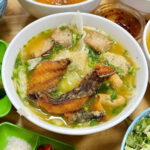
Bún Cá Basa
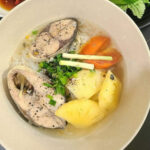
Bún Cá Cam
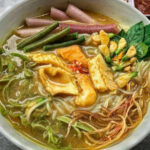
Bún Cá Campuchia
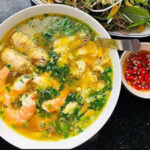
Bún Cá Châu Đốc
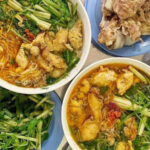
Bún Cá Hà Nội
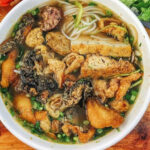
Bún Cá Hải Phòng
Bún Cá: Ingredients and Preparation
Main Ingredients
Main Cooking Method
Preparation Process
Bún Cá: A Deep Dive
Cultural Significance
Taste
Texture
Aroma
Color
Serving Style
Serving Temperature
Accompaniment
Occasions
Seasons
Special Diets
Calories
Popularity
Popular Similar Dishes
Popular Dining Area
Bún cá is a Vietnamese fish soup that features golden fried fish pieces in a flavorful broth. Across Vietnam, traditional bún cá has many variations, with each having a different origin. In the North and Central regions of Vietnam, the population of the fish villages creates bún cá.
In the South, people adopted this street-side specialty from Cambodia, utilizing numerous types of fish. Furthermore, this fish soup delicacy comes with many accompanying greens and herbs.
Aside from the crunchy fried fish, the broth is another highlight of bún cá thanks to its complex flavor created by simmering pork or fish bones for a long time. As for the noodles, locals prefer using thin strands of rice noodles with a pure white color and a soft texture.
Additionally, you should explore the various versions that are adapted differently. Then, discover the standard process of making this fish soup and learn about the positive and negative features of eating bún cá.
To add to that, you should check out the common inquiries about bún cá along with specialties with the same concept as this fish soup.
Key Points
Bún Cá Images
What Are Variations of Bún Cá?
Explore the diverse array of bún cá that each region has to offer in this comprehensive compilation:
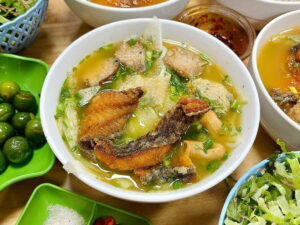
Bún Cá Basa
A version of bún cá made with basa catfish

Bún Cá Cam
A version of bún cá made with basa catfish
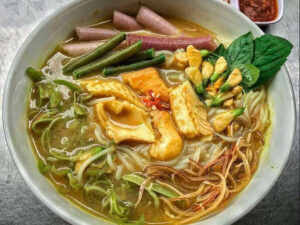
Bún Cá Campuchia
A bún cá variant with a rich flavor and an exotic taste of prahok

Bún Cá Châu Đốc
A version of bún cá tailored to Châu Đốc city of Vietnam

Bún Cá Hà Nội
Traditional fish noodle soup of Hanoi

Bún Cá Hải Phòng
A fish noodle soup from a coastal city of Vietnam
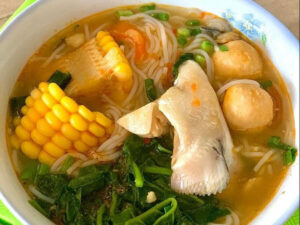
Bún Cá Hồi
A fish noodle version uses salmon as the main ingredient
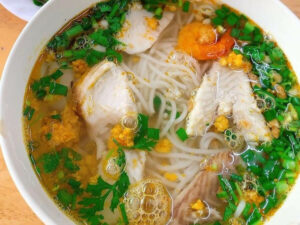
Bún Cá Lóc
The most popular fish often used for bún cá
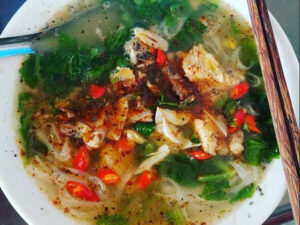
Bún Cá Nam Định
A fish noodle dish from Nam Dinh, a small town near Ha Noi
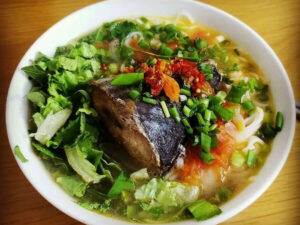
Bún Cá Ngừ
A complex flavor of fish broth with tuna and seafood
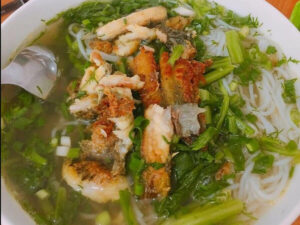
Bún Cá Rô Đồng Hải Dương
A fish soup with various toppings from Hai Duong
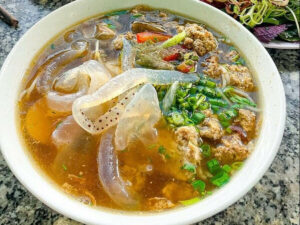
Bún Cá Sứa
A soup dish that combines fish with jellyfish for soft and slightly crunchy texture
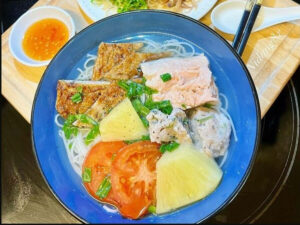
Bún Cá Nha Trang
A rich flavor soup with various toppings in Nha Trang
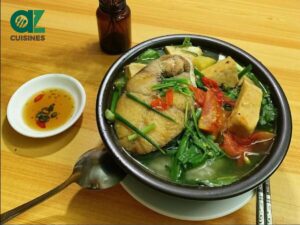
Bún Cá Thu
A popular choice of fish noodle soup in coastal cities
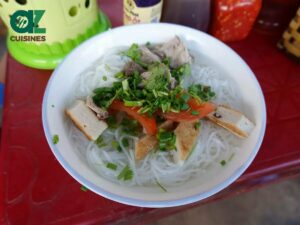
Bún Chả Cá
Rice vermicelli soup with fried fish cakes
After spending your time discovering the variants of bún cá, I suggest discovering the process of creating this complex Vietnamese fish soup.
How Bún Cá Is Made?
Here are the methods of making a standard Vietnamese fish soup using easy-to-get ingredients:
- Preparing ingredients: Clean and prepare the fish, which is various types like basa, greater amberjack, snakehead, salmon, tuna, etc. Blanch rice noodles in boiling water and gather other ingredients like herbs, greens, and spices.
- Making the broth: Simmer pork or fish bones in water for several hours to extract flavors, seasoning with salt, fish sauce, and other spices as desired.
- Preparing the fish: Depending on the specific type of bún cá, the fish is fried, boiled, or made into fish cakes. To make it simple, the fish is fried until golden.
- Assembling the dish: Cook the rice noodles until soft, place in a bowl, add the prepared fish, pour the hot broth over them, and garnish with fresh herbs and greens.
- Serving: Serve bún cá hot with accompaniments like herbs, lime wedges, chili, and other condiments on the side for diners to adjust flavors to their preference.
Don’t leave just yet, as you should have a look at some of the benefits and drawbacks that people often encounter when eating bún cá.
Pros and Cons of Eating Bún Cá
These are the factors that you should consider carefully before eating Vietnamese fish noodle soup:
Pros
Cons
With all the good and bad features of bún cá out of the way, I suggest taking a peek at some of the common questions people often have about this flavorful soup.



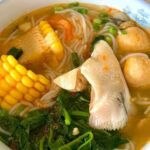
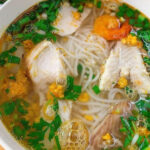
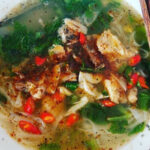
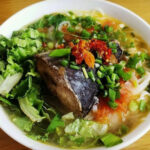
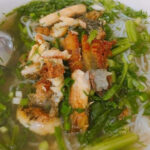
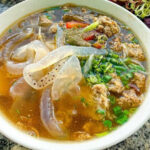
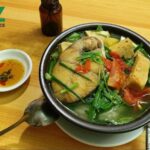
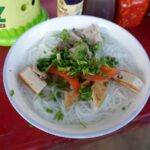
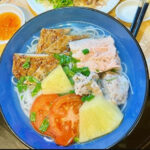
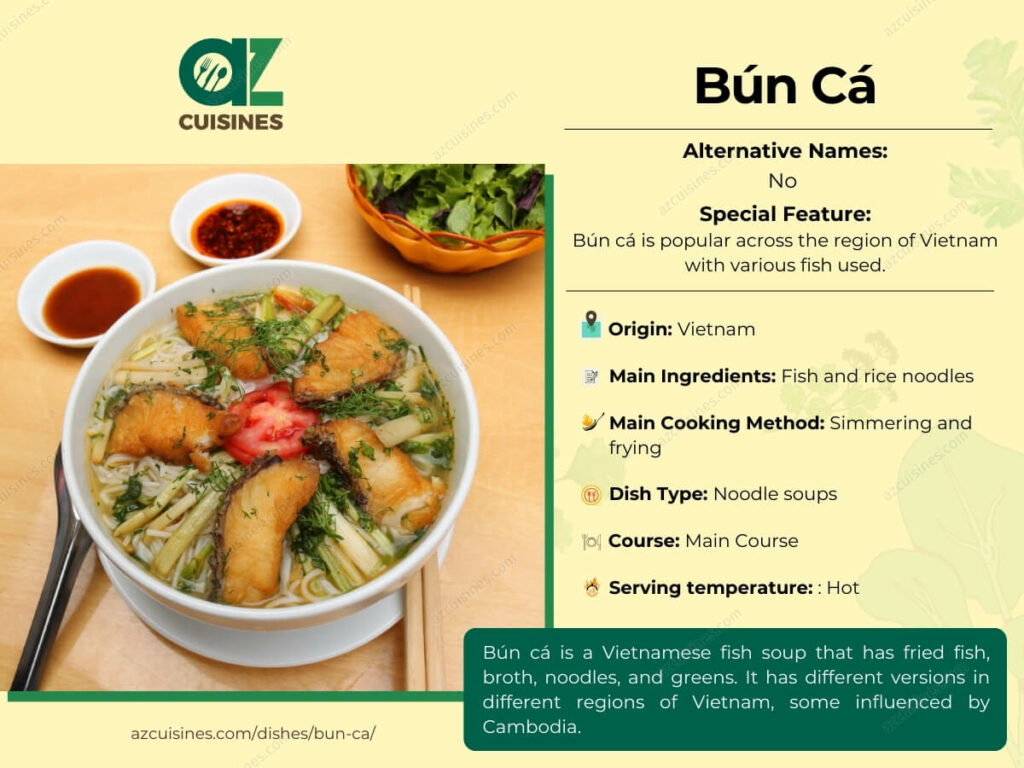

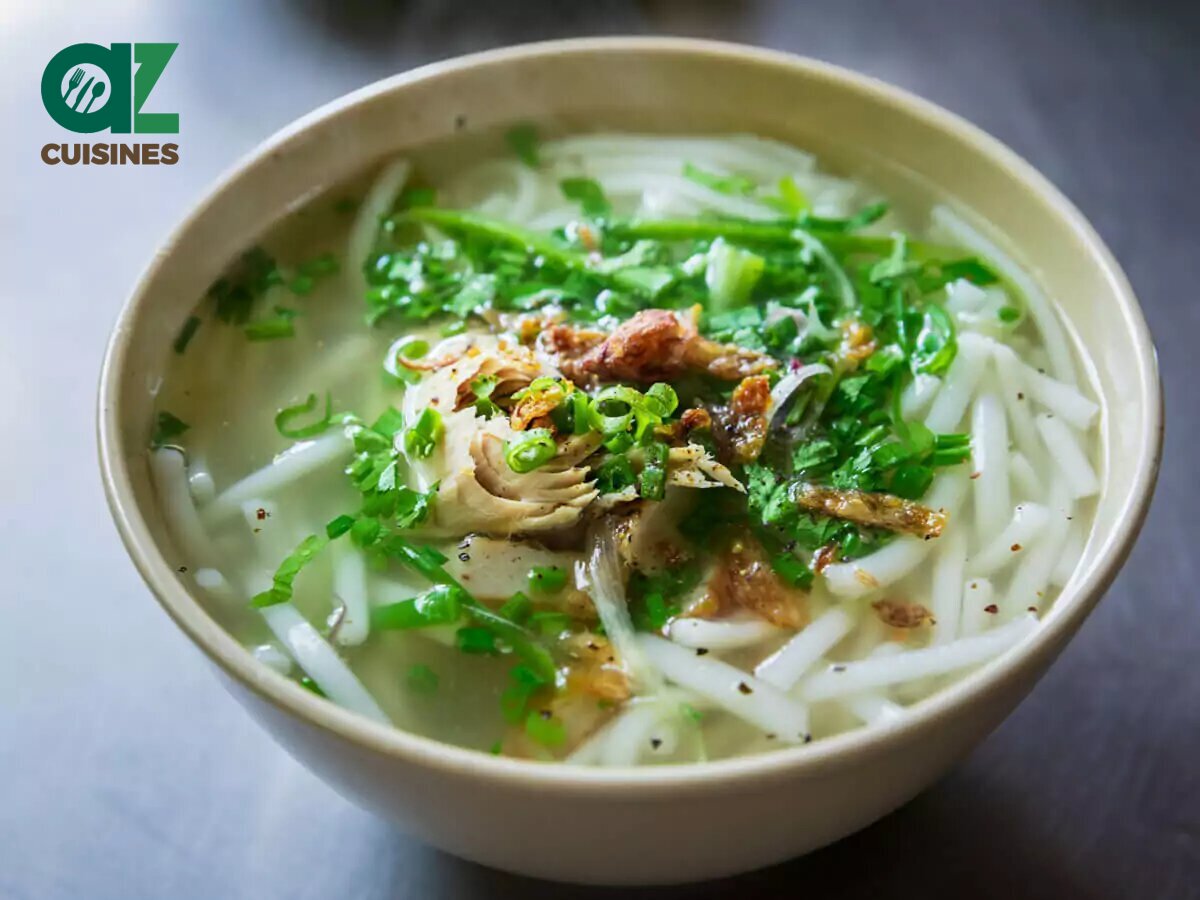
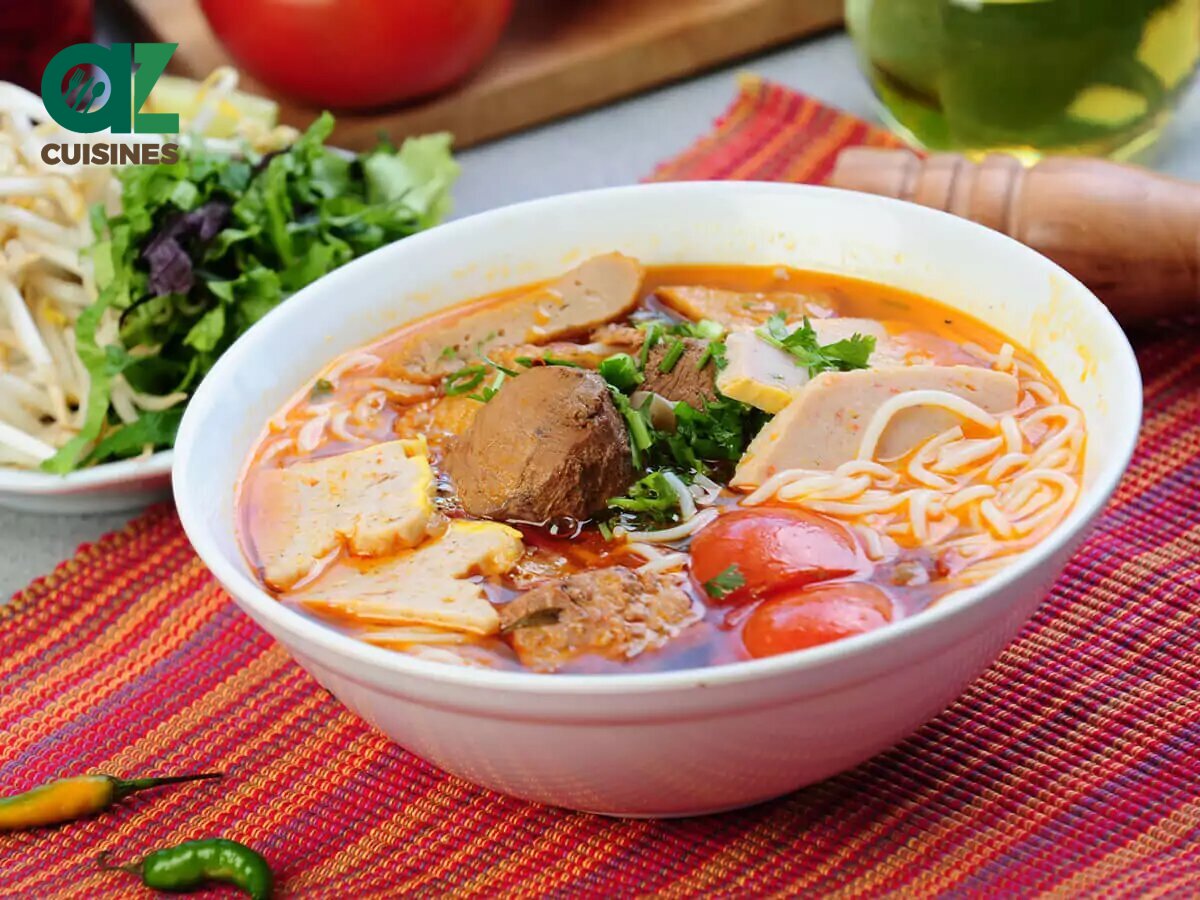
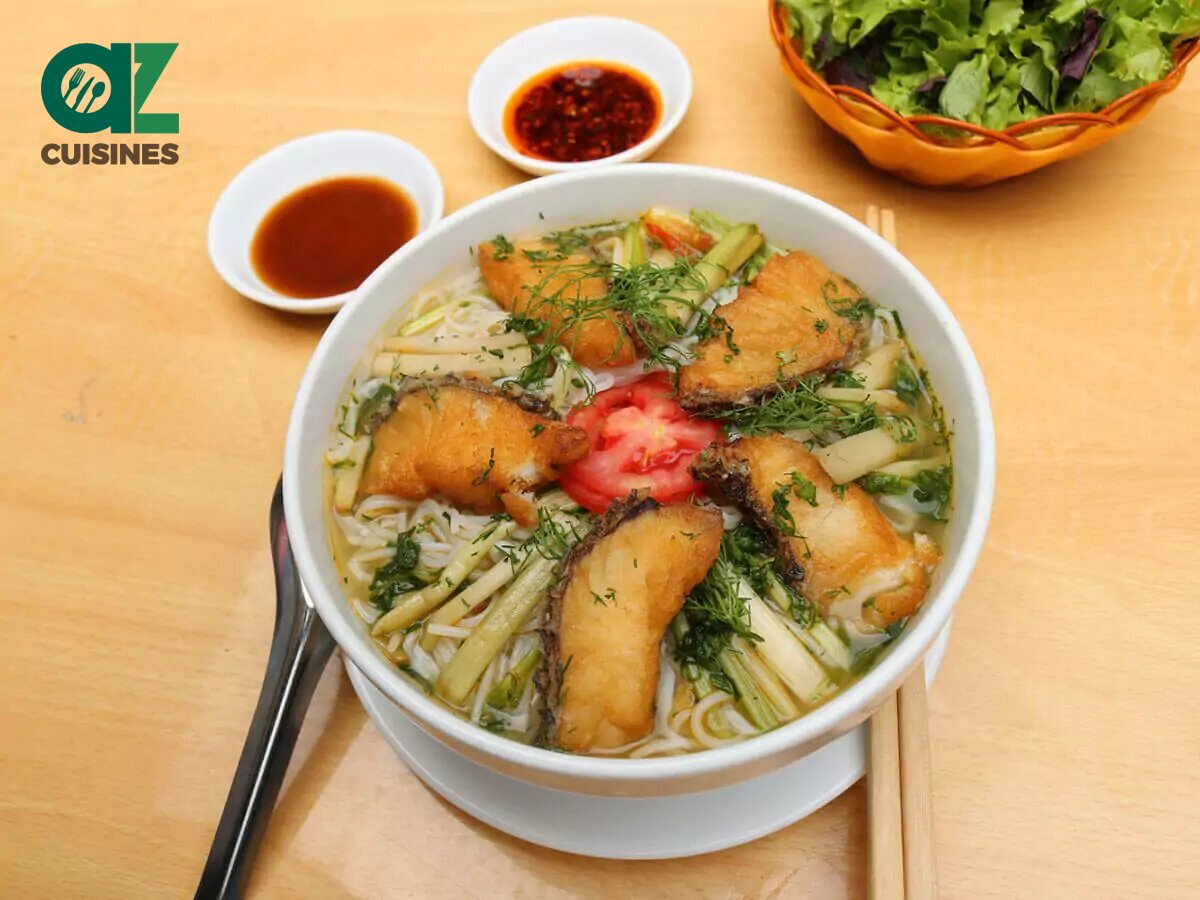
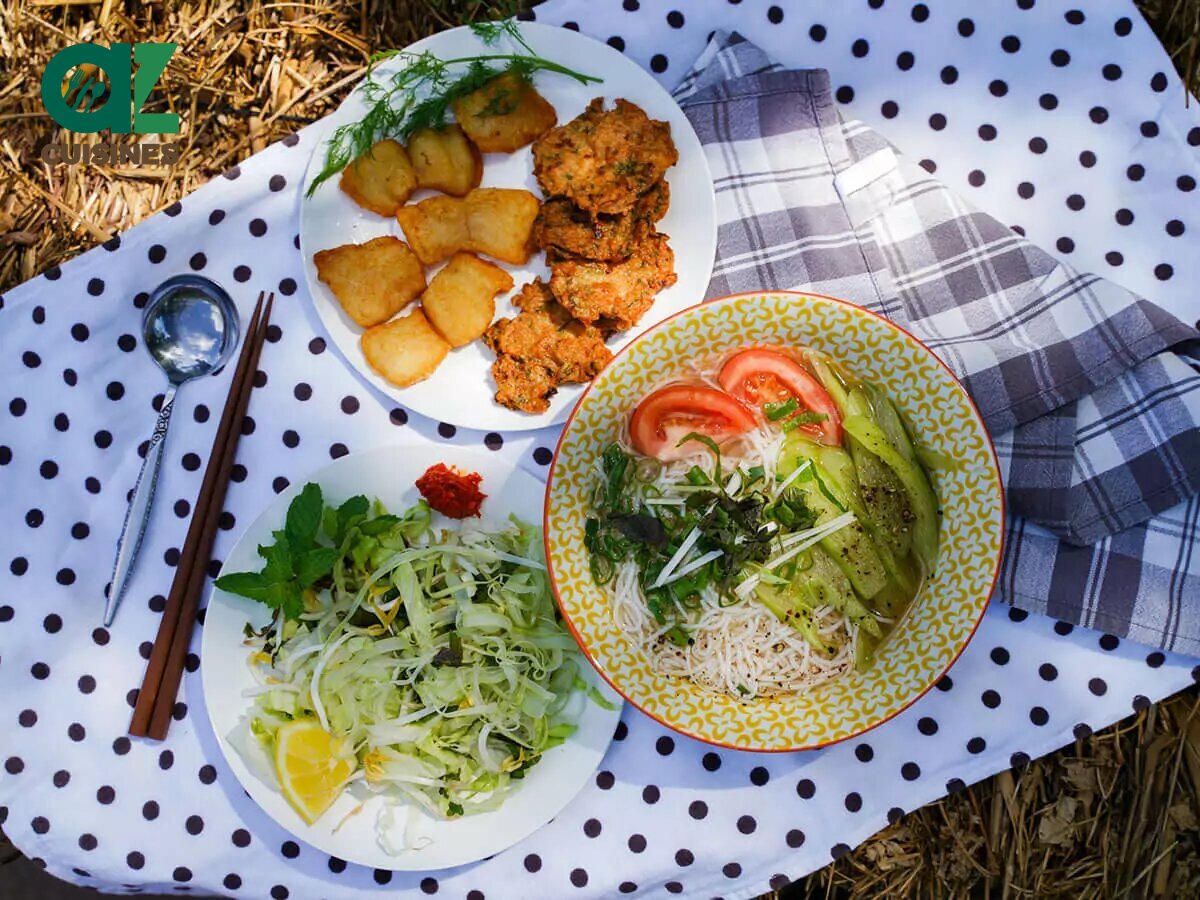

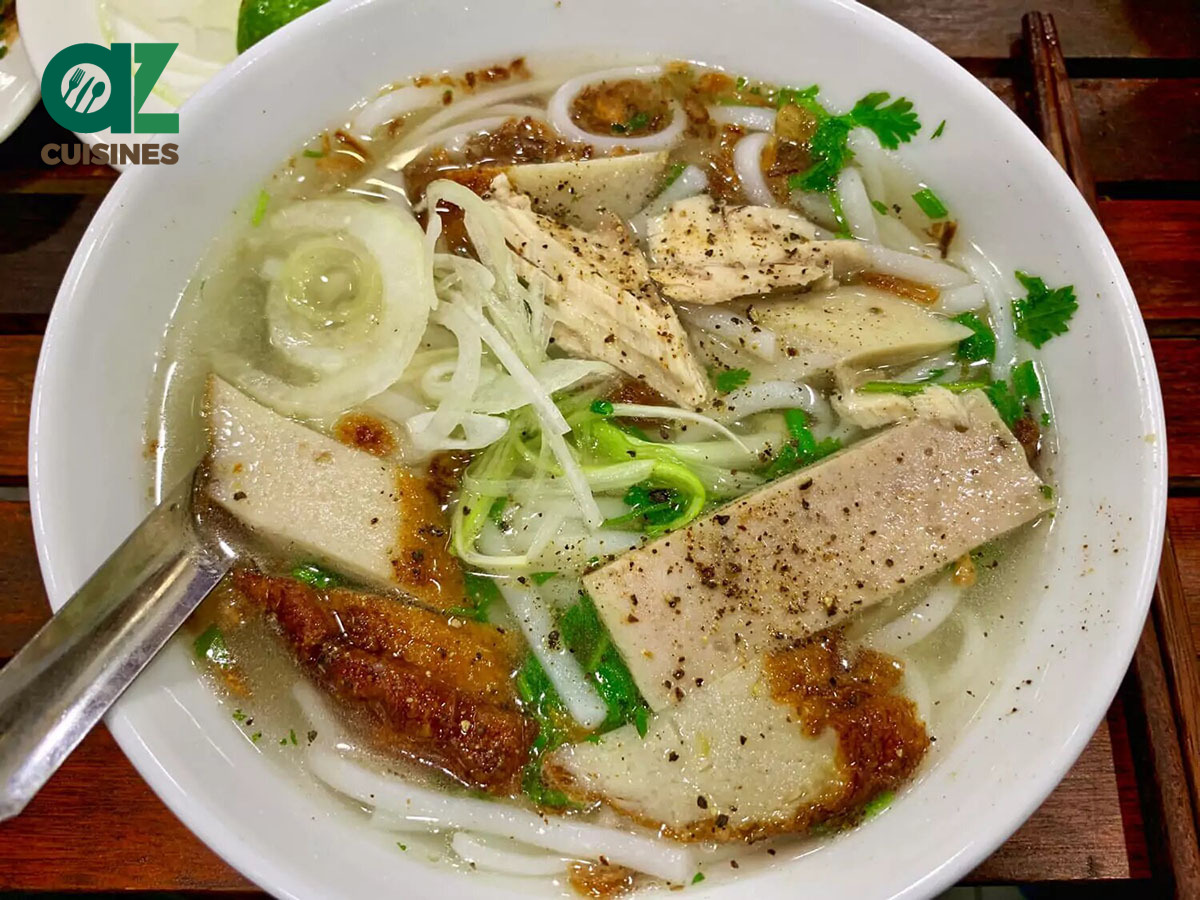
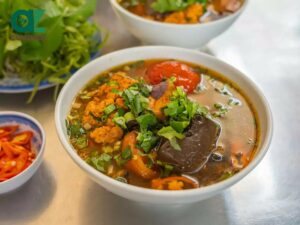
Truc Tran (Kris)
Senior Food Editor
Expertise
Home Cooking, Meal Planning, Recipe Development, Baking and Pastry, Food Editor, Cooking-video Maker, Vietnamese Food Evaluation Expert
Education
Truc Tran (Kris), an experienced food writer and editor, is great at exploring and describing global cuisines, from simple street food to fancy dining. In her writing, she skillfully mixes different flavors, cooking methods, and culinary traditions, showing the unique character of various cultures through their food and drinks. On azcuisines.com, Kris highlights her knowledge, especially in Asian cuisine and worldwide traditional dishes.